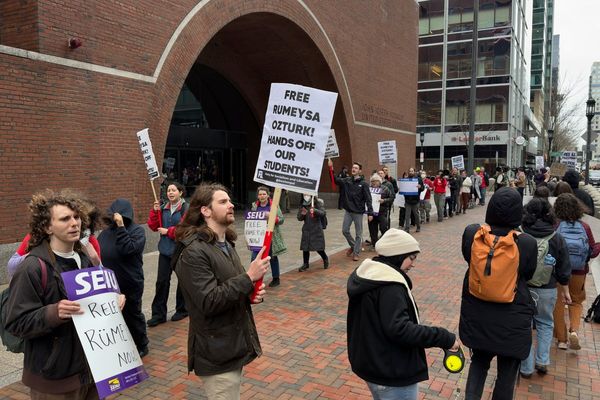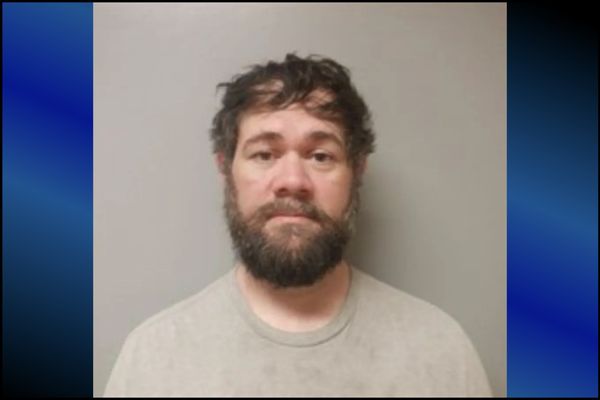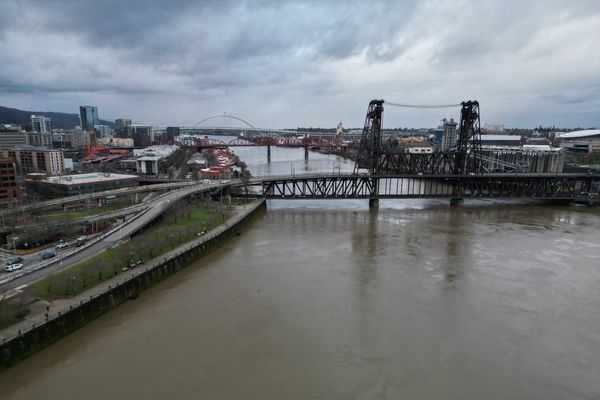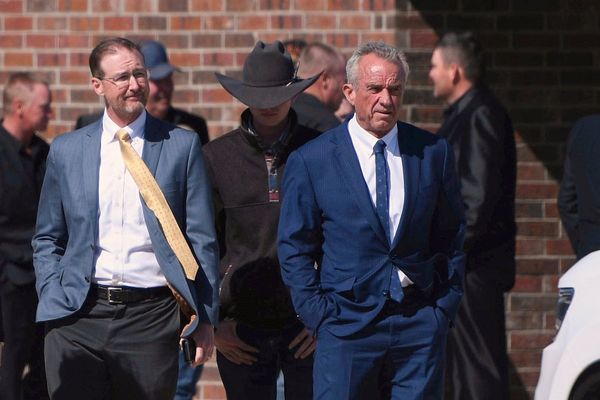Joetta Stevenson is no stranger to disaster. When Hurricane Harvey pummeled southeast Texas with more than 50 inches of rain in 2017, she watched the flood waters in parts of her Houston neighborhood turn intersections into rivers. Stevenson’s home was spared major damage, save a leaky roof, but the relentless rain swallowed nearby houses, filling them with more than a foot of water. Hundreds of homes and apartments were flooded and damaged in the neighborhood, which is hemmed in by Buffalo Bayou and two elevated freeways that redirect water to the area during severe rains.
This year, the National Oceanic and Atmospheric Administration is predicting a hurricane season with “above-normal” activity for the Gulf and Atlantic coasts. The COVID-19 pandemic stands to disrupt recovery efforts from the next storm, as public health guidelines mandating social distancing and reduced face-to-face interactions could further complicate the already byzantine recovery process. “We are not ready for another major hurricane,” says Reverend James Caldwell, a community advocate and resident of Houston’s Fifth Ward neighborhood. “There is an atmosphere of fear and apprehension. Everything is unexpected.”
The Fifth Ward, where Stevenson also lives, is one of Houston’s oldest historically Black communities. It’s also one of the poorest: The median household income was about $30,000 in 2017, about half the statewide median. As the president of the neighborhood group that covers the Fifth Ward, Stevenson has been helping families recover from Harvey ever since it made landfall. Her efforts have been concentrated on helping them obtain federal and state funding to repair damaged roofs and foundations. She says there are still residents who haven’t gotten the aid they need. “I was just on a call today about a home that’s deteriorating,” she says. “In one of the richest nations in the world, it shouldn’t take this long to get money from point A to point B.”
Stevenson and other community advocates say they feel overwhelmed at the prospect of recovering from another storm like Harvey during the pandemic. The number of coronavirus cases in Houston soared last month after Governor Greg Abbott lifted stay-at-home orders and allowed Texas businesses to reopen. Now the city, home to the world’s largest medical complex, is on the verge of running out of ICU beds for patients. Residents of the Fifth Ward are particularly vulnerable to the virus due to pollution-induced health problems. There are no permanent testing sites here, and people line up for blocks in their cars to get tested at a makeshift clinic at a community center. Those without vehicles often are turned away. Put simply, Houston’s poor neighborhoods and neighborhoods of color once again have been left behind. “It’s just like hurricane recovery,” Stevenson says.
When a roof gets blown off, or water seeps under floorboards and into the walls of homes in a low-income neighborhood, most homeowners don’t have the funds to make the repairs themselves. Many don’t have flood and home insurance: Nationally, only a quarter of houses insured through the federal flood insurance policy are low-income households. Access to savings or non-predatory loans can be scarce as well.
That’s where federal aid comes in. But it can take nearly a year for Congress to set and approve a budget for recovery funds—and it can take even longer for the money to trickle down to the local jurisdictions that distribute the funds. Harris County and the City of Houston have made excruciatingly slow progress on approving aid applications. By April of this year, Harris County had only issued 50 reimbursement checks to homeowners who applied for aid, and it stopped accepting new applications through July 1 due to the pandemic. In the meantime, the state’s General Land Office (GLO) has taken over managing Harris County’s funds in hopes of speeding up the process. The state agency has also taken steps to take over Houston’s recovery funding, a move Mayor Turner has resisted.
That yearslong process has meant that some families have been living in homes where mold in sheetrock and drywall was never removed. Mold exacerbates asthma and other respiratory issues, which in turn can make COVID-19 more deadly. “We’re a petri dish,” Stevenson says. “It’s so much coming at once. Before one thing ends, another one starts.”
If a storm like Harvey hits the region this summer or fall, the long road to recovery will be littered with even more obstacles than in years past.
For one, this year, much of the application process may go virtual. While it’s the safest way to slow the spread of COVID-19 for both government employees and residents, some community advocates and experts are worried that could leave low-income residents even further behind than before. The pandemic has revealed the depths of the digital divide in cities like Houston, as well as rural areas which have long struggled with broadband access.
After Harvey, Robert Holley volunteered with an organization called Fair Housing and Neighborhood Rights to help residents fill out the complicated aid applications. In his northwest Houston neighborhood, the passage of time is evident by the wear and tear on the blue tarps that still dot the rooftops: The newer ones are from Harvey, in 2017, and the shoddier ones are from Ike, in 2008. In years past, low income neighborhoods and neighborhoods of color have had disproportionately high denial rates for relief and recovery programs. An analysis from Texas Housers found that after Harvey, FEMA turned down 26 percent of all homeowners who applied for assistance, but that number rose to 40 percent for those with an annual income between $15,000 to $30,000. The applications were denied for a host of reasons—in some instances, the properties weren’t worth enough to be repaired; in others, homeowners couldn’t confirm occupancy or provide proper identification.
The aid application process requires stacks of documentation, Holley says: everything from property tax records and deeds to flood insurance paperwork. “People aren’t always aware of what documents they need,” he says, and when a storm knocks out power and the internet for days at a time, it makes it even more difficult to figure out what documents need to be salvaged. “And then they’ll need to have those documents scanned and saved to a computer or phone. You have to dot all the I’s and cross all the T’s—one mistake will cost you.” What’s more, Holley says, Houston has not yet demonstrated it can provide virtual aid to low-income residents in recent months. When Houston announced a $15 million relief fund for renters who faced unemployment due to the pandemic, the application site crashed in less than an hour as hundreds of thousands of people attempted to apply for aid. (A similar program through Harris County doled out $30 million in two phases, without reports of technical issues.)
“The internet is a young person’s passion,” says Steveson, from the Fifth Ward. Though many older community members are still trying to stay connected digitally, she says it’s already been a struggle to adjust to Zoom calls and teleconferencing.
“It seems like a bad choice either way,” says Jennifer Trivedi, a research scientist at the University of Delaware’s Disaster Research Center. “You [might] leave people behind virtually, but doing in-person applications is dangerous for both residents and government employees.” Like many other parts of the federal disaster management plan, FEMA can use its discretion when deciding on the best approach in certain regions. In areas where the risk of spreading COVID-19 is lower, the agency might decide to send more employees on the ground, Trivedi says. But given that Harris County is reporting hundreds of new cases every day, that seems unlikely in large swaths of the state—particularly if the state won’t issue a new stay-at-home order, or enforce its own orders to wear masks and reduce large social gatherings.
In this little slice of southeast Texas, it seems like the storms never stop. “We will be struggling like a son of a gun,” Stevenson says.
Read more from the Observer:
-
Neglected in Care: Long before the coronavirus devastated nursing homes, inadequate staffing in for-profit Texas facilities endangered residents, leading to injuries and deaths.
-
Amid a National Reckoning Over Racial Injustice, Royce West Seeks to Upset MJ Hegar—and the DSCC: Texas’ Democratic Senate runoff to face John Cornyn has taken on new political significance as a Black state senator vies to defeat the national party’s favored candidate.
-
COVID-19 is Surging in Rural Texas, Threatening to Overwhelm Local Hospitals: ICU beds are limited, medical providers are falling sick, and urban hospitals where small facilities transfer critical patients are running out of space.







